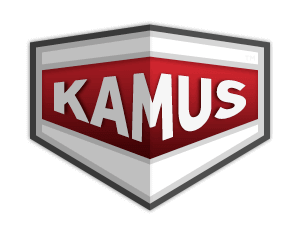pagepeɪdʒ
page (v)
- present
- pages
- past
- paged
- past participle
- paged
- present participle
- paging
page (n)
- plural
- pages
page
English Definitions:
page (noun)
one side of one leaf (of a book or magazine or newspaper or letter etc.) or the written or pictorial matter it contains
Page, Sir Frederick Handley Page (noun)
English industrialist who pioneered in the design and manufacture of aircraft (1885-1962)
Page, Thomas Nelson Page (noun)
United States diplomat and writer about the Old South (1853-1922)
page, pageboy (noun)
a boy who is employed to run errands
page (noun)
a youthful attendant at official functions or ceremonies such as legislative functions and weddings
page, varlet (verb)
in medieval times a youth acting as a knight's attendant as the first stage in training for knighthood
page (verb)
contact, as with a pager or by calling somebody's name over a P.A. system
page (verb)
work as a page
"He is paging in Congress this summer"
foliate, paginate, page (verb)
number the pages of a book or manuscript
Page (ProperNoun)
for someone who was a servant.
Page
A page or page boy is traditionally a young male servant, but may also have been used for a messenger at the service of a nobleman or an apprentice knight. The origin of the term is uncertain, but may either from the Latin pagius (servant), possibly linked to peasant or an earlier Greek word παῖς
page
Polyacrylamide gel electrophoresis (PAGE) is a technique widely used in biochemistry, forensic chemistry, genetics, molecular biology and biotechnology to separate biological macromolecules, usually proteins or nucleic acids, according to their electrophoretic mobility. Electrophoretic mobility is a function of the length, conformation, and charge of the molecule. Polyacrylamide gel electrophoresis is a powerful tool used to analyze RNA samples. When polyacrylamide gel is denatured after electrophoresis, it provides information on the sample composition of the RNA species.Hydration of acrylonitrile results in formation of acrylamide molecules (C3H5NO) by nitrile hydratase. Acrylamide monomer is in a powder state before addition of water. Acrylamide is toxic to the human nervous system, therefore all safety measures must be followed when working with it. Acrylamide is soluble in water and upon addition of free-radical initiators it polymerizes resulting in formation of polyacrylamide. It is useful to make polyacrylamide gel via acrylamide hydration because pore size can be regulated. Increased concentrations of acrylamide result in decreased pore size after polymerization. Polyacrylamide gel with small pores helps to examine smaller molecules better since the small molecules can enter the pores and travel through the gel while large molecules get trapped at the pore openings. As with all forms of gel electrophoresis, molecules may be run in their native state, preserving the molecules' higher-order structure. This method is called native-PAGE. Alternatively, a chemical denaturant may be added to remove this structure and turn the molecule into an unstructured molecule whose mobility depends only on its length (because the protein-SDS complexes all have a similar mass-to-charge ratio). This procedure is called SDS-PAGE. Sodium dodecyl sulfate polyacrylamide gel electrophoresis (SDS-PAGE) is a method of separating molecules based on the difference of their molecular weight. At the pH at which gel electrophoresis is carried out the SDS molecules are negatively charged and bind to proteins in a set ratio, approximately one molecule of SDS for every 2 amino acids.: 164–79 In this way, the detergent provides all proteins with a uniform charge-to-mass ratio. By binding to the proteins the detergent destroys their secondary, tertiary and/or quaternary structure denaturing them and turning them into negatively charged linear polypeptide chains. When subjected to an electric field in PAGE, the negatively charged polypeptide chains travel toward the anode with different mobility. Their mobility, or the distance traveled by molecules, is inversely proportional to the logarithm of their molecular weight. By comparing the relative ratio of the distance traveled by each protein to the length of the gel (Rf) one can make conclusions about the relative molecular weight of the proteins, where the length of the gel is determined by the distance traveled by a small molecule like a tracking dye.For nucleic acids, urea is the most commonly used denaturant. For proteins, sodium dodecyl sulfate (SDS) is an anionic detergent applied to protein samples to coat proteins in order to impart two negative charges (from every SDS molecule) to every two amino acids of the denatured protein.: 161–3 2-Mercaptoethanol may also be used to disrupt the disulfide bonds found between the protein complexes, which helps further denature the protein. In most proteins, the binding of SDS to the polypeptide chains impart an even distribution of charge per unit mass, thereby resulting in a fractionation by approximate size during electrophoresis. Proteins that have a greater hydrophobic content – for instance, many membrane proteins, and those that interact with surfactants in their native environment – are intrinsically harder to treat accurately using this method, due to the greater variability in the ratio of bound SDS. Procedurally, using both Native and SDS-PAGE together can be used to purify and to separate the various subunits of the protein. Native-PAGE keeps the oligomeric form intact and will show a band on the gel that is representative of the level of activity. SDS-PAGE will denature and separate the oligomeric form into its monomers, showing bands that are representative of their molecular weights. These bands can be used to identify and assess the purity of the protein.: 161–3
Citation
Use the citation below to add this dictionary page to your bibliography:
Style:MLAChicagoAPA
"page." Kamus.net. STANDS4 LLC, 2024. Web. 26 Apr. 2024. <https://www.kamus.net/english/page>.

Discuss this bahasa indonesia page translation with the community:
Report Comment
We're doing our best to make sure our content is useful, accurate and safe.
If by any chance you spot an inappropriate comment while navigating through our website please use this form to let us know, and we'll take care of it shortly.
Attachment
You need to be logged in to favorite.
Log In